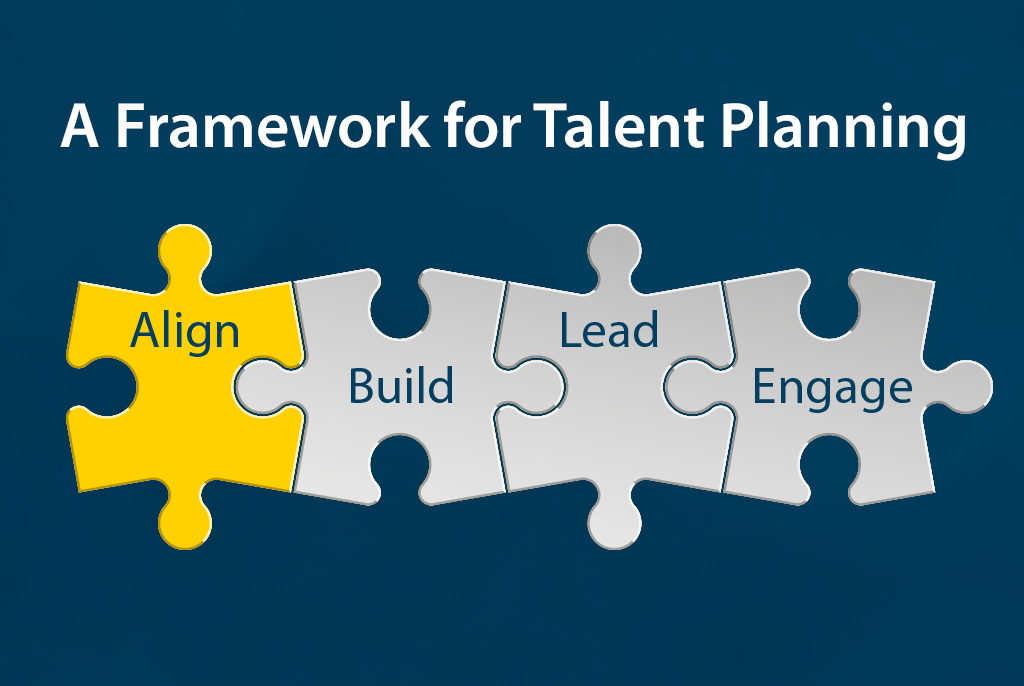Align talent strategy with corporate strategy

The ABLE Framework is a comprehensive approach to talent planning from the National Center for Middle Market that can help you implement and coordinate talent planning activities by bringing more structure and substance to the process. Use it to evaluate your talent planning strengths and weaknesses, and determine whether you’re dedicating sufficient attention and resources toward the critical parts of talent planning. The framework has four parts:
Part 1: Align talent strategy with corporate strategy
Part 2: Build the processes you need—but don’t overbuild
Part 3: Lead by example
Part 4: Engage the organization
Align
Your company’s strategic objectives and tactical objectives have implications for your human capital. Therefore, it’s critically important to create alignment between your talent strategy and business strategy.
Imagine, for example, that your organization decides to expand overseas and open a new location in China. As a result of this growth, you will need employees with new skills—meaning you will have to help current employees learn or hire new people. You’ll probably need to change how you evaluate and recruit talent. You’ll need to adjust some employees’ work hours to accommodate the new time-zone difference.
Creating alignment between your talent strategy and business strategy demands careful thought and effort. This will play out in a number of different ways. For example, if you’re trying to figure out payroll increases as part of your annual strategic planning, think seriously about your talent needs for next year instead of writing down the same percentage as last year. If you’re working on an M&A deal, discuss talent issues upfront instead of waiting until all of the paperwork is signed. If you’re holding a quarterly business meeting, discuss talent planning activities—such as who is ready for promotion, who is struggling, whether succession plans are in place for key roles—with your executive team.
The “align” checklist
• Understand the human capital implications of your strategic and tactical objectives
• Ensure that talent strategy and corporate strategy are aligned
• Include talent planning in all strategy discussions (annual plan, M&A, etc.)
• Discuss talent planning actions (e.g., promotions, manage outs, etc.) at quarterly business meetings
• Identify critical (and/or otherwise important) positions
• Identify current and future skills gaps
Next in this series
Build the processes you need—but don’t overbuild
Others in this series
Lead by example
Engage the organization
Category: Talent Management
Tags: talent management, talent planning

